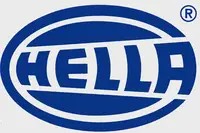Hella Creates New Generation of Digital Sensors to Replace Analog
 |
PLYMOUTH, Mich. January 27, 2009: Hella KGaA Hueck & Co., a tier-one supplier of automotive lighting and electronic equipment, will produce a new line of highly-economical and accurate digital sensors in late 2009 for select vehicles of a U.S. automaker.
The new digital throttle-body position sensor will use a Single Edge Nibble Transmission (SENT) protocol. Engineers use the term “one nibble” to refer to the transmission of four bits of data. In this case, one data-nibble will be transmitted with each pulse.
First approved by SAE International in 2006, the SENT protocol was created for the transmission of accurate, high-resolution sensor data to an electronic control unit (ECU). It is a simpler, low-cost alternative to Controller Area Network (CAN) or Local Interconnect Network (LIN) digital buses and replaces analog sensors.
“Sensors are fitted at numerous locations in today’s automobiles,” said Dr. Martin Fischer, president of Hella’s Corporate Center USA and Hella Electronics Corporation. “For cost reasons, it’s not necessary to use CAN- and LIN-bus systems in every case.”
For example, throttle-body sensors often are connected directly to the ECUs. Today, data is transmitted in an analog form, but digital technology is able to provide more functionality.
“Using the example of a throttle-body sensor where a travel angle must be detected, the sensor acquires data and converts it into a digital value,” Fischer noted. “This digital value is then transmitted to the ECU where it is decoded.”
Hella pairs the SENT protocol with its CIPOSŪ (Contactless Inductive Position Sensor) technology. CIPOS sensors accurately measure travel or angle changes regardless of high temperatures and vibrations.
“Unlike analog transmissions, where signals can be altered, the SENT protocol allows for a more robust signal transmission,” Fisher pointed out. “In addition, Hella’s electromagnetic compatibility (EMC) design for the new SENT interface makes this sensor insensitive to interference. As a result, shielded or twisted cables are not needed anymore in order to fulfill automotive EMC requirements.”
The SENT protocol permits compact packaging. Two signals can be transmitted over a single wire, reducing the need for additional cables and cutting costs. For example, for the throttle position sensor, only a 3-wire connection is needed between the CIPOS sensor and the ECU.
The SENT protocol combined with Hella’s CIPOS sensor offers automakers more efficient options for automotive applications where travel or angle measurement is required.


